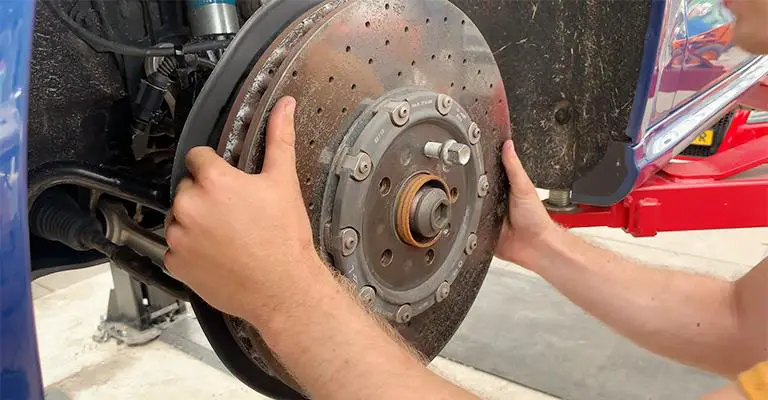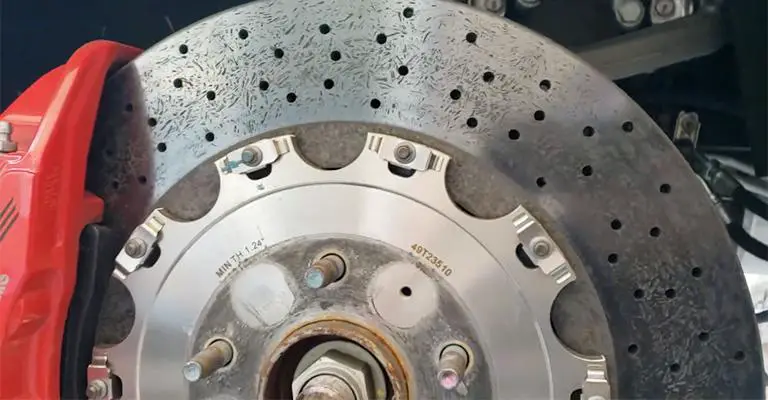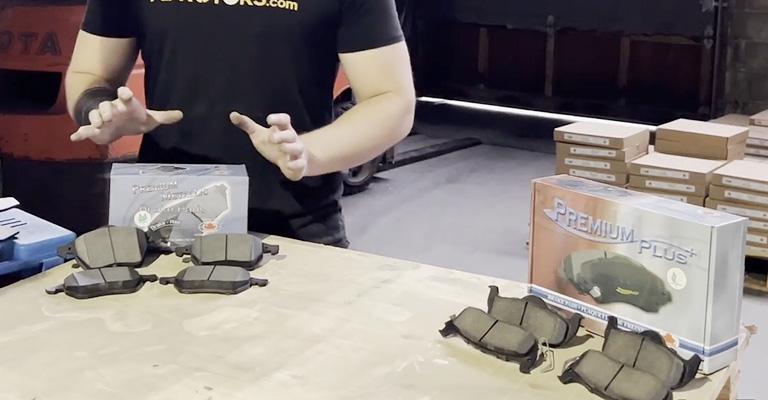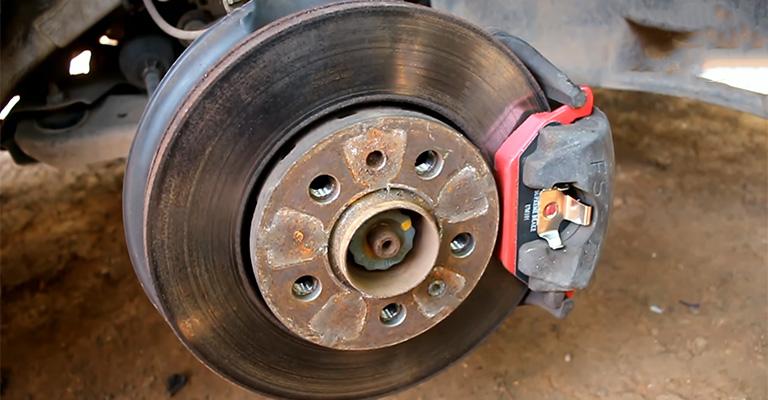If you’re in the market for new brakes, you may have heard about ceramic brakes as a potential option.
In this post, we’ll delve into the benefits of ceramic brakes and why they may be the right choice for your vehicle.
Ceramic brakes have gained popularity in recent years for their improved performance and durability, and they are especially well-suited for high-performance vehicles.
Keep reading to learn more about why ceramic brakes may be your best choice. Ceramic brakes have several advantages over traditional metallic brakes. Here are a few:
Weight: Ceramic brakes are generally lighter than metallic brakes, which can help improve a vehicle’s fuel efficiency and handling.
Heat dissipation: Ceramic brakes are better at dissipating heat, so they can handle higher temperatures without fading or losing effectiveness. This makes them ideal for high-performance vehicles that generate a lot of heat during braking.
Durability: Ceramic brakes tend to last longer than metallic brakes, as they are less prone to wear and tear. This means they may need to be replaced less frequently, saving you money in the long run.
Noise reduction: Ceramic brakes produce less noise than metallic brakes, which can be a benefit if you’re looking for a quieter ride.
Overall, ceramic brakes offer many benefits, including improved performance, longer lifespan, and reduced noise, making them a popular choice for high-performance vehicles.
However, they tend to be more expensive than metallic brakes, so it’s important to weigh the costs and benefits before deciding.

Contents
All About Ceramic Brake Pads & What Makes It A Better Option
It is very similar to the kind of ceramic used to make pottery and plates that ceramic brake pads are made of.
Despite this, ceramic brake pads are much denser and far more durable than standard brake pads. A copper fiber is also embedded within ceramic brake pads to increase friction and heat conductivity.
Due to the following reasons, ceramic brake pads have consistently grown in popularity since they were introduced in the mid-1980s.
1. Temperature & Driving Conditions
It can be more reliable to use ceramic brake pads over organic brake pads in a broader range of temperatures and driving conditions than organic brake pads.
2. Wear & Tear Residue

While ceramic brake pads wear down, they produce less dust and other particles than organic brake pads.
Disadvantages
It should be noted. However, ceramic brake pads have some limitations. The primary reason for their high price is their manufacturing cost. Ceramic brake pads cost more to manufacture than other brake pads.
Furthermore, because ceramic and copper are not as heat-absorbing as other materials, more of the heat generated by braking passes through the brake pads and into the brake system.
As a result, other braking components may be subjected to more wear. Finally, ceramic brake pads are not considered the best option for extreme driving conditions.
When choosing between ceramic or semi-metallic brake pads in very cold conditions or for an upcoming race, metallic brake pads are better.
What Are The Differences Between Ceramic Brake Pads And Semi-Metallic Brake Pads?

Different materials are used to manufacture ceramic brake pads and semi-metallic brake pads, so the difference is simple.
Certain applications call for ceramic brake pads or semi-metallic brake pads to offer different advantages over each other.
It is recommended to use semi-metallic brake pads for performance vehicles, track driving, or as towing brake pads since they provide the best braking over a wider range of temperatures and conditions.
In addition to being lightweight, they are made from heat-conducting materials, allowing them to withstand higher temperatures while braking and cooling the system.
Ceramic brake pads are cheaper and less noisy than semi-metallic pads, but their price usually falls between the two.
As well as being quieter, ceramic brake pads do not damage the brake rotors because they quickly recover after extreme temperatures. Compared with semi-metallic brake pads, ceramic ones leave less residue on wheels as they wear.
Through their lifespan, ceramic brake pads provide better noise control and less wear and tear on brake rotors without sacrificing braking performance, which is typical for semi-metallic brake pads.
There are many factors to consider before choosing ceramic brake pads over semi-metallic ones, so it is wise to do some research before making a decision.
Should I Go With Ceramic Brake Pads?

You should always use your vehicle’s brakes when it comes to safety. You must eventually stop your car, no matter how well it moves. Whenever you step on the brake pedal, the brake system converts the kinetic energy of your vehicle into friction.
You have a few options when selecting brake pads for your vehicle based on your driving style and the vehicle’s needs. Alternatively, you can simply use the OEM (Original Equipment Manufacturer) pads that came with your vehicle.
Additionally, you might consider upgrading to ceramic or semi-metallic brake pads as an aftermarket alternative.
Suitable brake pads do not exist for all conditions. It is important to consider several characteristics of brake pads when choosing a brake pad:
- Performance
- Price
- Wear on your braking system
- Amount of messy brake dust
- Noise
You might have to pick a different set of brake pads next time you take your car in for brake service, depending on whether you’re towing a heavy trailer, speeding around a racetrack, or commuting.
If you also tend to slam the brakes a lot, you might choose something different from someone who appreciates a smooth, quiet drive.
As a comparison, ceramic brake pads are usually your most expensive replacement option. It was designed to provide drivers with the best comfort level by using ceramic materials mixed with copper fibers.
In addition to being the least noisy, they produce the least brake dust and are stable over a wide range of temperatures.
Moreover, they last the longest. Pads made from ceramic also provide a firmer brake pedal than those made from organic materials.
Their performance is not as good as other pads in extreme temperatures, and they are not ideal for use in performance cars. In addition, ceramic brake pads are quiet, comfortable, and durable, making them an excellent choice for everyday driving.
Final Words
To determine which brake pad to use for your customer’s specific vehicle and driving needs, you should understand how brake pads work and which materials are best suited for different applications.
Each customer’s vehicle and driving style determines the “better choice” of brake pads, so there is no definitive “best pad” to recommend.
It is recommended to customers who commute a lot/drive in cities to use ceramic brake pads. They also do not push their car through heavy-duty use such as heavy towing or track driving, resulting in cleaner rims free of black brake dust.
Breaking down the pros and cons of ceramic brake pads will not only assist customers in understanding how their braking system operates. However, ensure they leave with the right automotive brakes for safe driving that extends beyond the shop.
